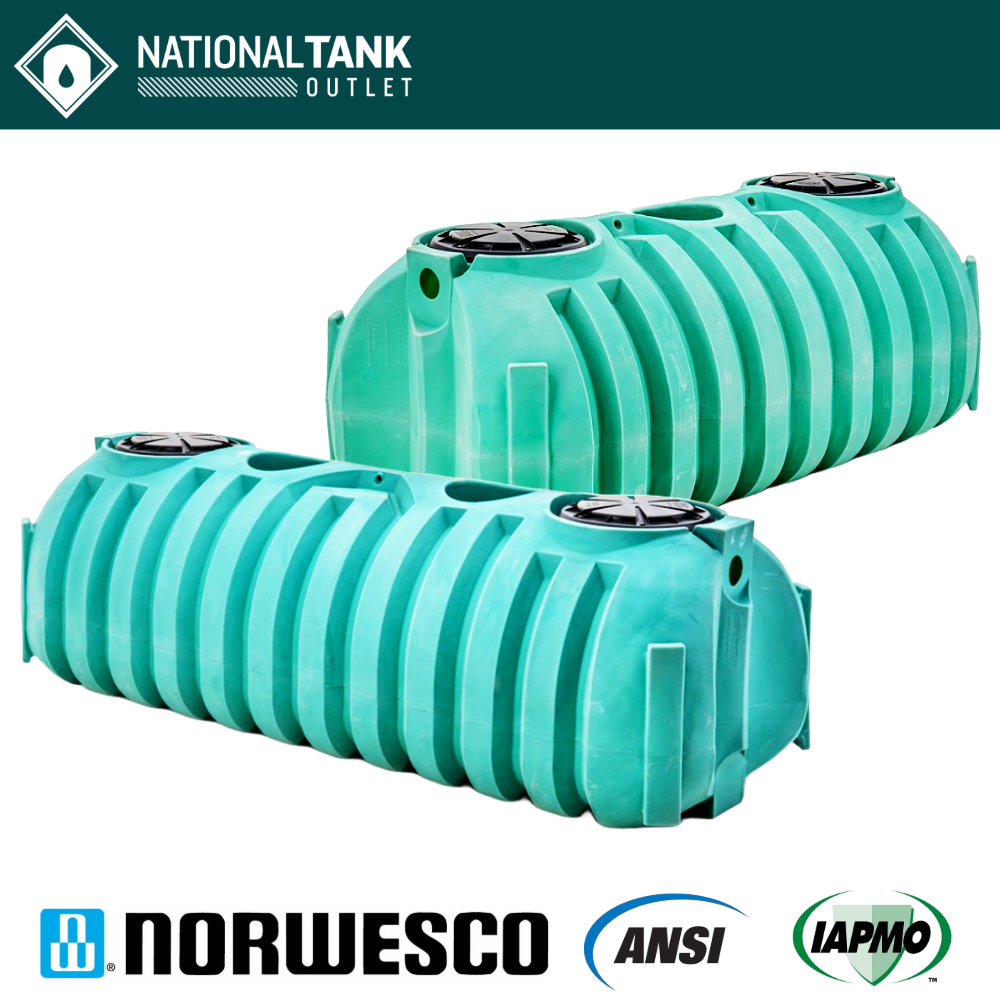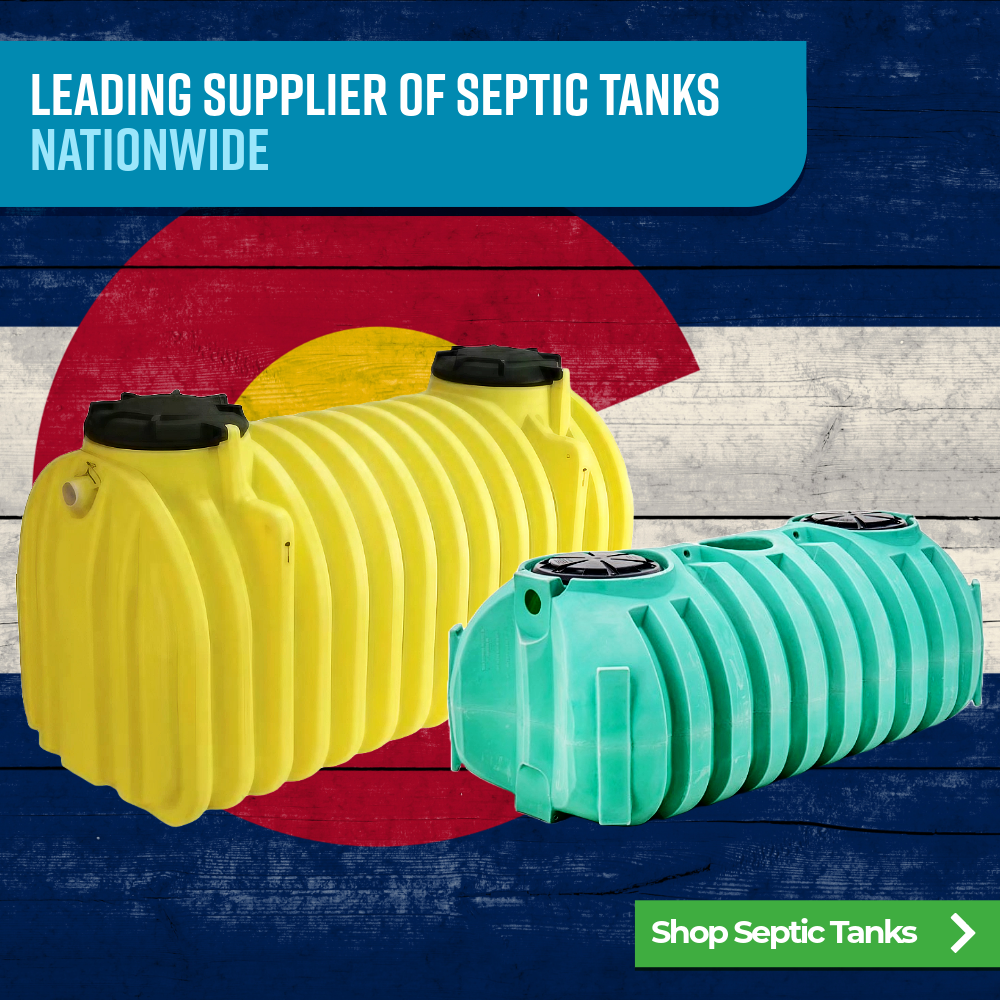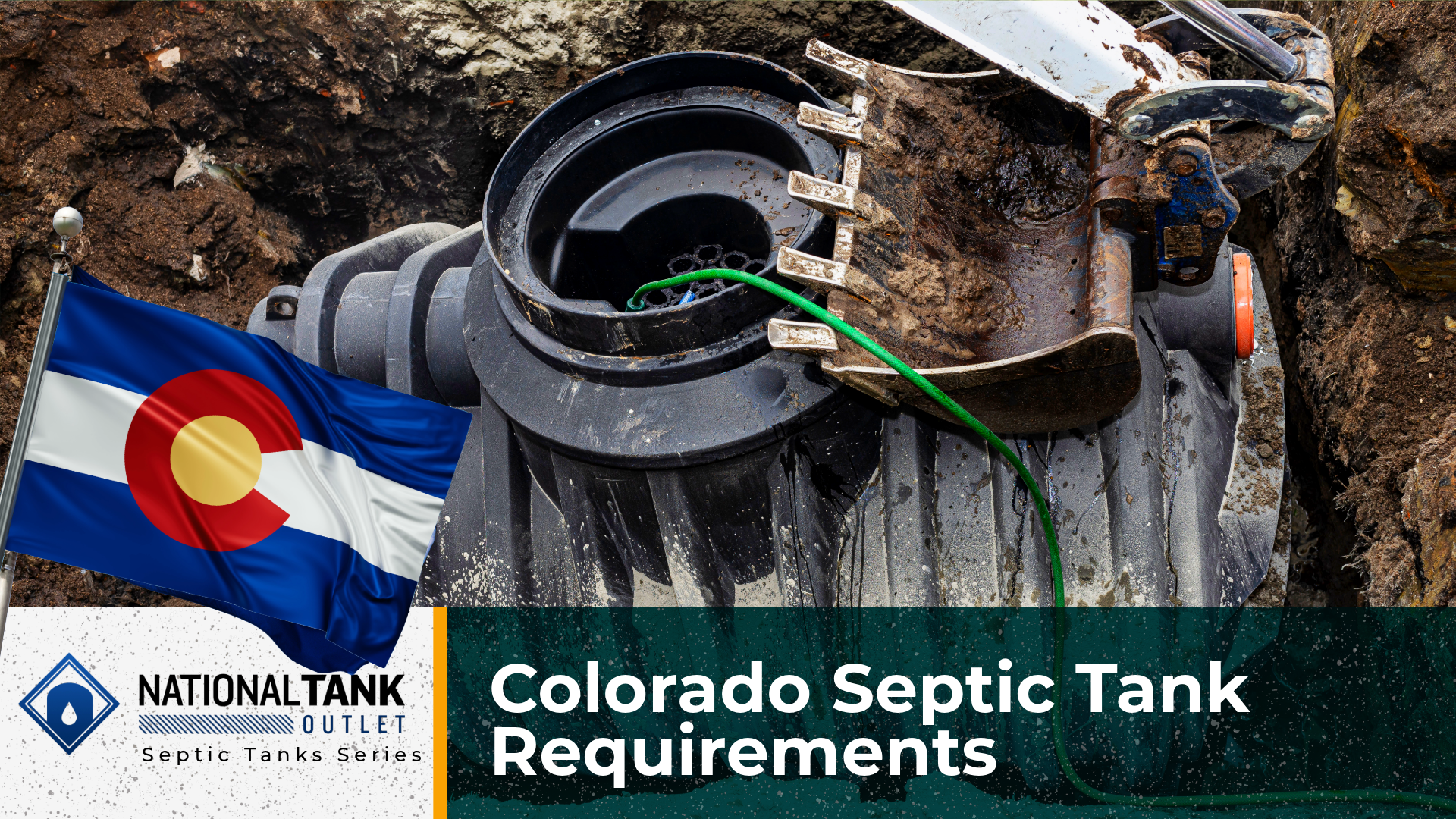
Many residents in the state of Colorado live in suburbs and rural communities that reside beyond the reach of public sewer lines. For these Coloradans, septic tanks provide the necessary means to manage the wastewater they generate onsite every day. In Colorado State, the installation, maintenance, and operation of septic tank systems are governed by specific regulations set in place to protect both public health and the environment. In this guide, we will explore the Colorado septic tank requirements that homeowners and contractors need to know regarding wastewater management in Colorado.
Colorado State Septic Tank Regulations
Colorado State septic tank regulations are primarily governed by Regulation 43 and enforced by the Water Quality Control Commission (WQCC) within the Colorado Department of Public Health and Environment (CDPHE). Local public health departments of different Colorado State counties often adopt additional or different regulations within their jurisdictions.

Colorado Septic Tank Definitions
In the state of Colorado, a septic tank and septic tank system are collectively referred to, and known as an On-site Wastewater Treatment System, abbreviated OWTS. Additionally, the drainage field, also known as a leach field, disposal field, or effluent field, is referred to as a Soil Treatment Area, abbreviated STA.
Can I Install My Own Septic Tank in Colorado
When it comes to installing a septic tank in Colorado, homeowners sometimes want to know if they can install the septic system themselves. The answer to this question is both yes and no as it will depend on specific circumstances such as where you live in Colorado state, what county, what type of system is being installed, and nearby environmental concerns such as surface waters.

According to Colorado’s septic system regulations, all homeowners must generally consult and use licensed professionals, such as engineers and contractors, for the design and installation of their septic systems. This is to ensure that all installations meet the state’s guidelines to ensure public health, to maintain the environment, and to make sure the septic tank will last for use years down the road.
Exceptions
Some Colorado State counties have exceptions to this rule, however. For example, a homeowner in Park County is permitted to install one septic system per year. This means that if you have the necessary skills and knowledge, you could technically install your own septic system, while still following state requirements for system design and permits.
In other Colorado state counties, anyone who passes a state-provided course can become permitted to build the septic system on their property. So, if you’re willing to invest the time and effort, you could gain the qualifications needed to carry out the installation yourself.
Requirements
That being said, all components of the system must comply with On-Site Wastewater Treatment Systems Regulation No. VIII in terms of the system, design, placement, the qualifications of the materials and parts used, permits, and inspections. This means that even if you install the system yourself, it must meet all regulatory standards.
In Colorado, an On-site Wastewater Treatment System (OWTS) permit is required for new installations, expansions, and many repairs whether minor or major. Therefore, before you begin any work, you must take the necessary steps to file and receive the needed permits from your local health department or the State Health Department.
Takeaway for Installing your Own Septic Tank in Colorado
To summarize, while it’s possible for homeowners to install their own septic tanks in Colorado, it’s not necessarily straightforward. Given the complexity of the regulations and the expertise required, it might be more practical and efficient to hire a licensed professional for the job. Not only will this ensure that the installation is done correctly, but it could also save you a lot of time, stress, and potential headaches down the road.
Can I Use a Polyethylene Septic Tank in Colorado
Yes, polyethylene septic tanks are approved for use in septic systems in the state of Colorado. According to State Regulation 43, polyethylene septic tanks must be manufactured in a way and by a manufacturer that is IAPMO certified by an engineer. We at the National Tank Outlet provide IAPMO certified plastic septic tanks approved for use in Colorado.
Key Septic Tank Requirements
Permits
Any installation, modification, or minor/major repair of a septic system in Colorado requires a permit. These permits are commonly issued by the county’s local health department.
The State Health Department provides a webpage dedicated to helping residents search for their local Colorado health department and contact information.
Additionally, Colorado distinguishes between three different types of septic tank systems: standard, large, and high-risk. Different permits and/or planning may be required based on the system type. More info:
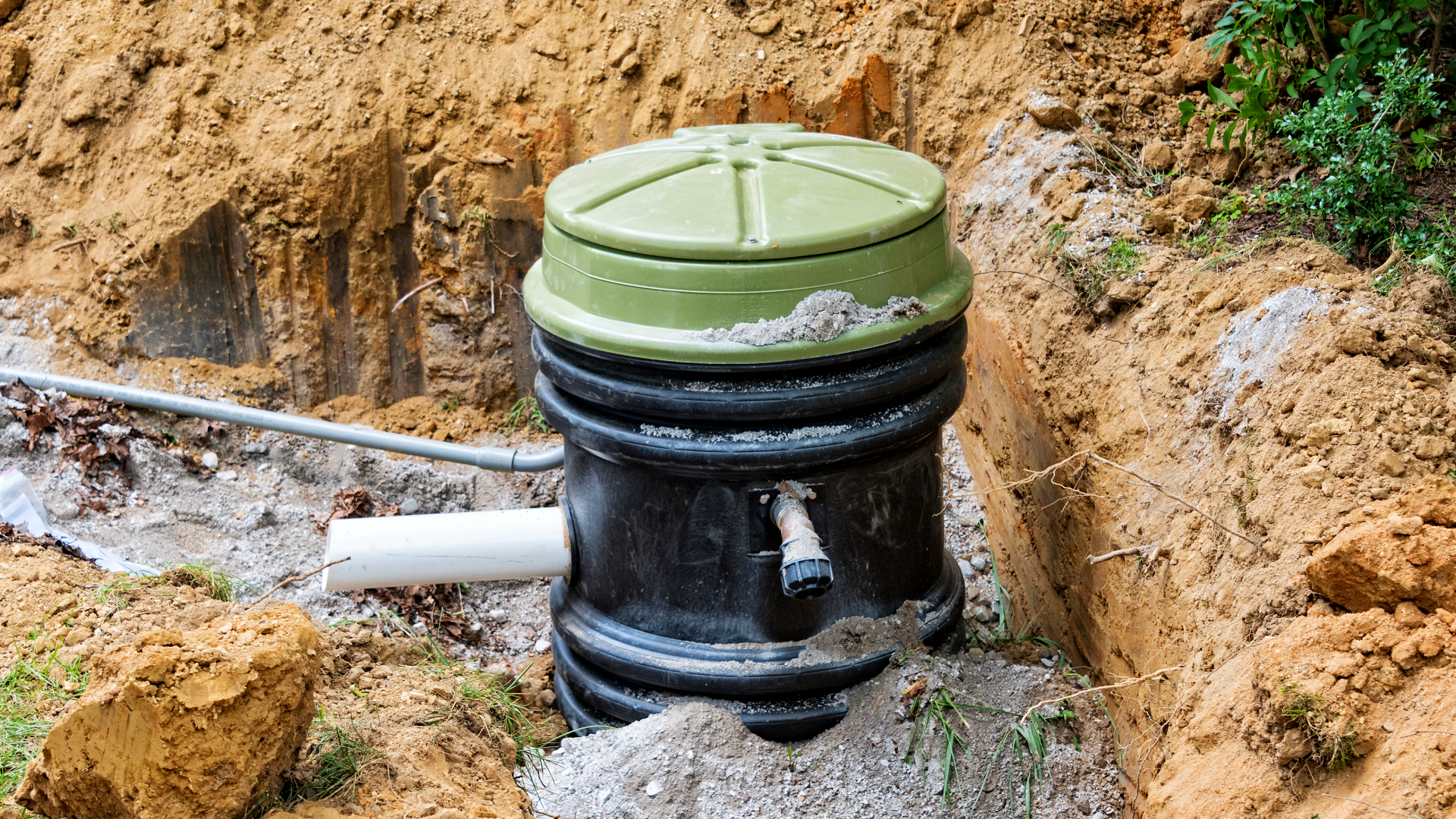
- Standard Systems (<2,000 gallons per day flow): Local public health agencies issue permits based on compliance with Regulation 43 and local regulations.
- Large Systems (>2,000 gallons per day flow): Require design review and approval by the CDPHE Water Quality Control Division.
- High-Risk Systems: Systems posing significant environmental concerns may require additional permitting and design complexities.
Permit Fees
Note, permit fees will likely be required for the filing, review, approval, and issuance of a septic work permit. Fee amounts can vary by location and work type. Often permits for more major septic system work have higher fees compared to minor work. Larimer County, CO provides transparency on its OWTS permit categories and fees.
Site Evaluations
In all cases for a new septic tank installation, a site evaluation will be required. A site evaluation will involve soil tests such as a percolation test or test pits, and perhaps a land survey to assess nearby environmental concerns of high risk. Colorado requires a competent technician to perform a site evaluation. Detailed information on site evaluations and Colorado requirements can be found in CO Regulation 43 Page 25.

Septic systems must be sited according to minimum setback distances from nearby wells, water bodies, property lines, and other structures.
Septic System Design and Components
Most septic tanks in Colorado are conventional, gravity-fed systems that feature a septic tank, leach field, and associated piping. Alternative septic systems are acceptable on a case-by-case basis. In most Colorado counties, septic tank system designs must be created by a licensed professional engineer who will use data from the site’s layout, property size, parcel features, and soil evaluations to design the septic tank system.
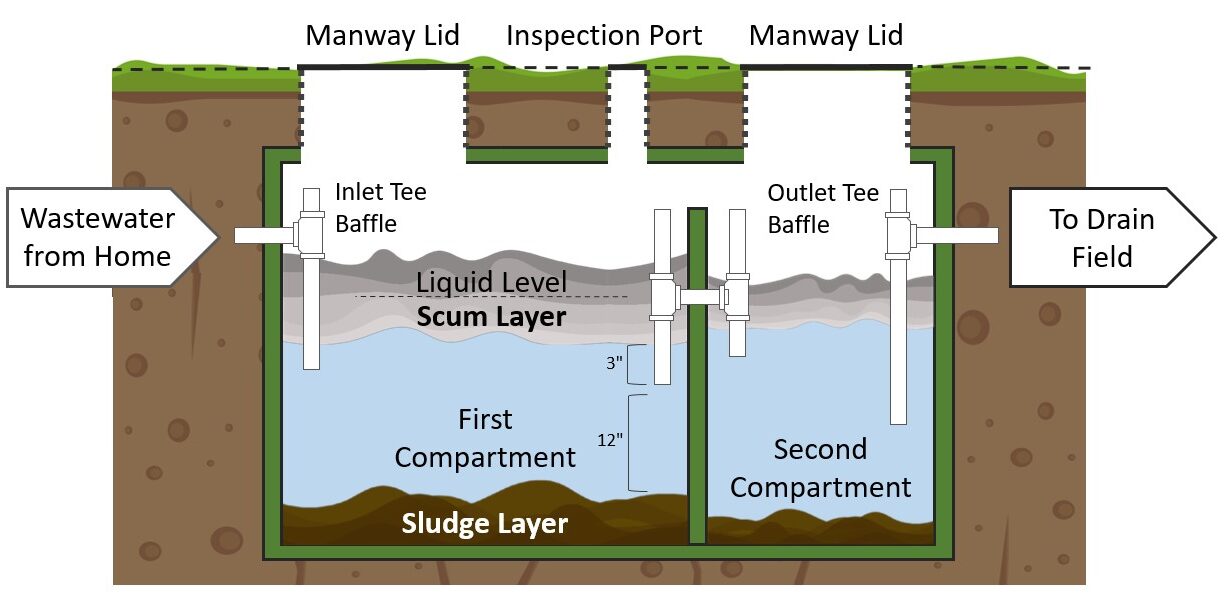
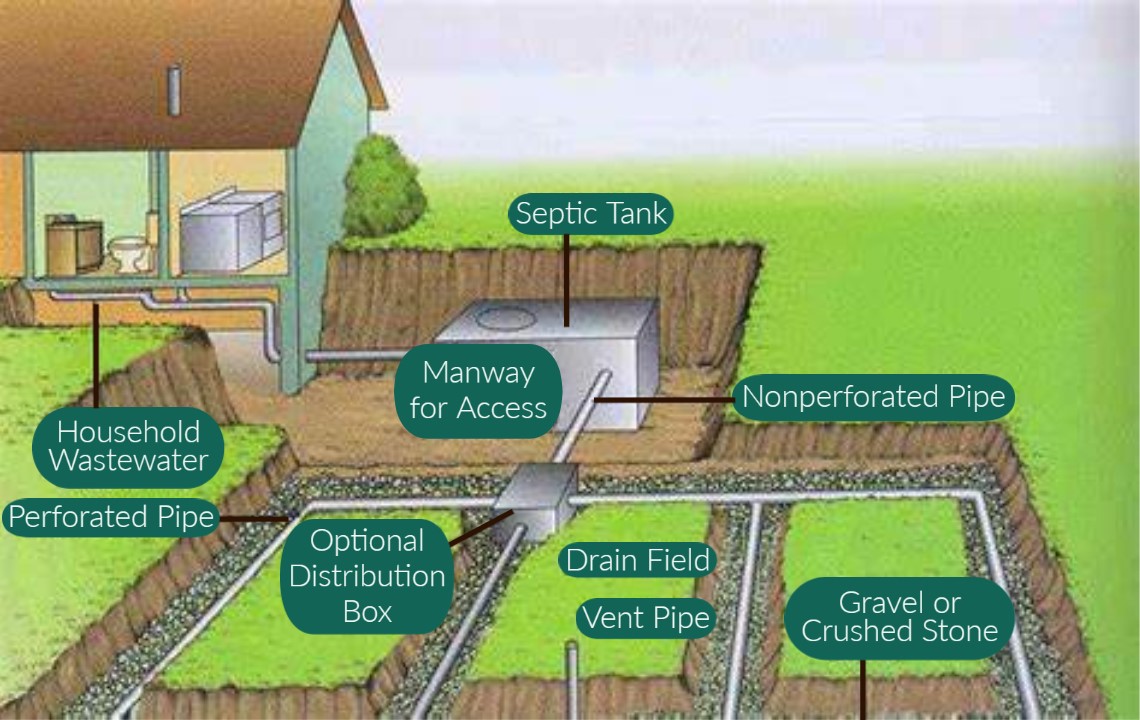
Septic Tank Size Required in Colorado
According to the Colorado State Regulation 43 for On-site Wastewater Treatment Systems, septic tank sizes required in Colorado range from 1000 gallons to 1250 gallons and up. The septic tanks should be double (2) compartment, low profile septic tanks in design. The tank size required depends on the size of the property. This is summarized in the following table:
| Number of Bedrooms | Tank Capacity (Gallons) |
| 2 or 3 | 1,000 |
| 4 | 1,250 |
| Each Additional | 250 |
Table Source: DEPARTMENT OF PUBLIC HEALTH AND ENVIRONMENT, Water Quality Control Commission, REGULATION NO. 43 – ON-SITE WASTEWATER TREATMENT SYSTEM REGULATION, 5 CCR 1002-43
Installation
Homeowners are advised to consult and employ licensed professionals for the design and installation of their septic systems.
In general, installation will involve preparing the parcel to receive equipment and system components, digging the system site out to the required depths using machinery, placing and setting the septic tank according to manufacturer’s instructions, setting up the leach field with substrate and perforated pipe (if being used), completing plumbing connections, scheduling, and inspection with a government representative, and then completing backfilling of the installed system.
Inspection and Maintenance
Colorado septic system owners are required to have their tanks pumped and inspected at least once every four years. All pumping and inspection must be performed by a licensed septic cleaner certified with the state. Some state counties require a septic tank to be pumped whenever the amount of scum and sludge exceeds 25% the total tank volume.
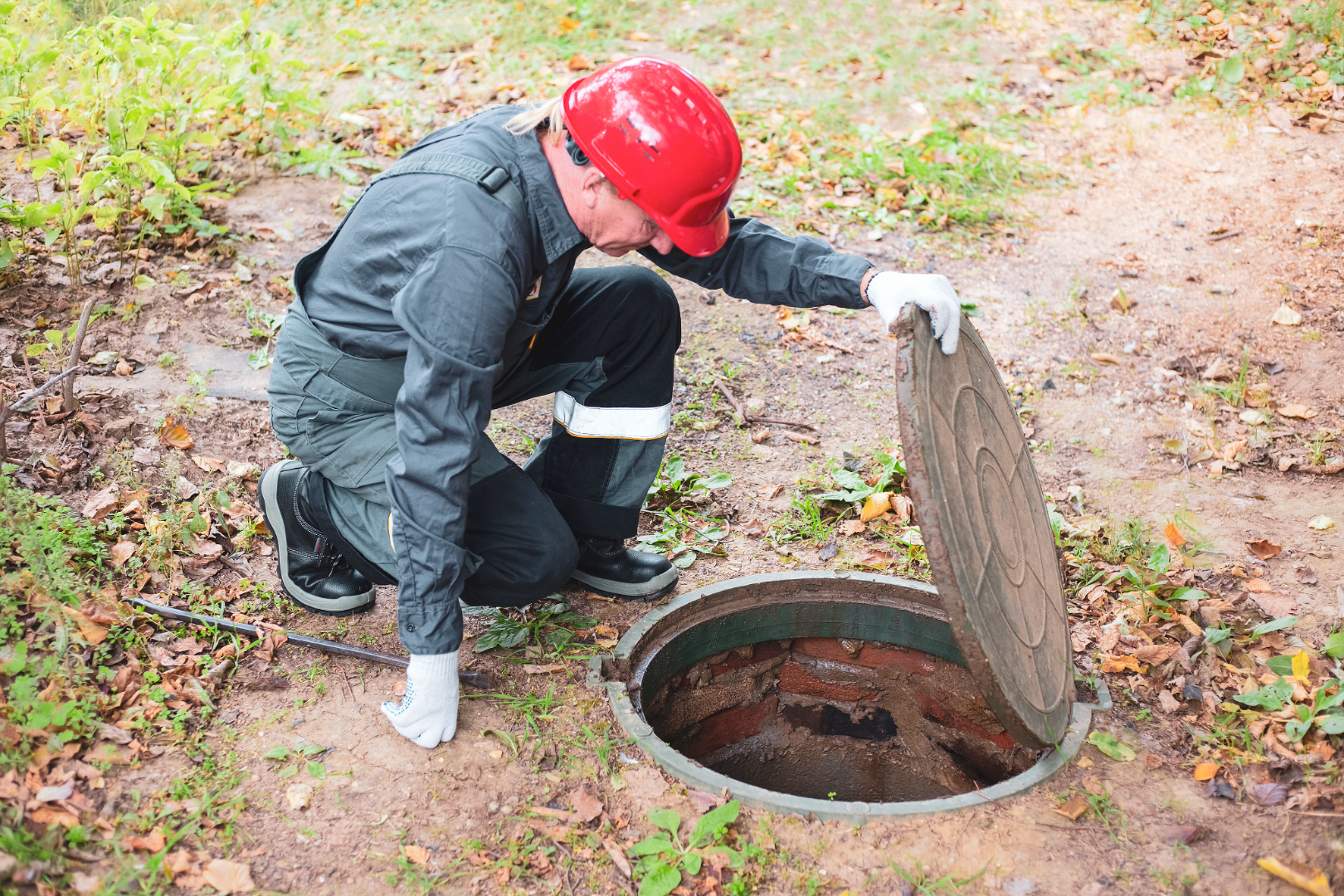
Financial Assistance
The state of Colorado is one of thirteen states serviced by the Rural Community Assistance Corporation (RCAC). The RCAC provides grants and low-interest loans to qualifying residents to help in the purchase and work costs for the installation of a new well or septic tank system.
Transfer of Ownership
Under Colorado On-Site Wastewater Treatment System Property Transfer Regulations, all septic systems should or must be inspected prior to transfer of ownership of the property or residence where the septic tank system is located. This inspection must be done by a licensed professional. The inspection must be done prior to closing on the transfer of ownership exchange, (signing papers, deeds, etc.).

If a prior-to-transfer septic inspection indicates the OWTS is permitted, approved, and properly operating in compliance, then the current owner (not the new owner) can submit the inspection report and application to the overseeing county or department.
If the inspection indicates the OWTS is not permitted or needs repairs, then the current owner must take out a permit to fix or repair the septic system. If this cannot be completed due to existential circumstances, the buyer (the new owner) will have to submit an agreement to repair and file for a conditional property transfer.
These rules are in place to protect both the current owner and new owner of a property with a septic system from liability and legal concerns and to maintain infrastructure and help protect Colorado’s environment.
Note and remember that these are general state guidelines. Specific requirements may vary depending on local regulations. Always consult with a certified professional or your local health department to ensure your septic tank system meets all relevant regulations.
Get the Septic Tank You Need in Colorado with the National Tank Outlet
Finding the right septic tank for your home, business, or contract is vital to the job, state regulations, and the system’s performance and lifespan. At National Tank Outlet, we offer an extensive range of polyethylene septic tanks that are not only cost-effective but are rotational-mold manufactured and IAPMO certified for watertight quality and durability. Septic tanks are available in many sizes up to 20,000 gallons to meet the capacity needs of different installations for commercial, agricultural, and residential applications.
Whether a new system is being installed or an old one replaced, our product experts are ready to help make sure you find the right septic tank for the job. Take advantage of our competitive prices and save 10 to 50% MSRP on your next plastic septic tank with our lowest price guarantee. Browse our collection of Colorado approved septic tanks for sale and ready for nationwide delivery.
Additional Resources
- Colorado Department of Public Health and Environment Onsite Wastewater Treatment Systems Program
- Regulation 43 | On-Site Wastewater Treatment Systems Regulation
- Colorado Local Public Health Agencies
Disclaimer: This guide is intended to provide general information and expectations around the installation and requirements of a septic tank and system in the state of Colorado and is not intended to substitute for professional advice or consultation from state departments or licensed professionals. The information provided is current and accurate to the best of our knowledge at the time of this writing. For specific advice on your individual situation, please consult with the Colorado Department of Public Health and Environment (CDPHE), your local county department, or a licensed septic tank professional contractor.
